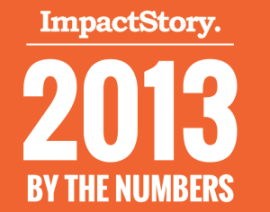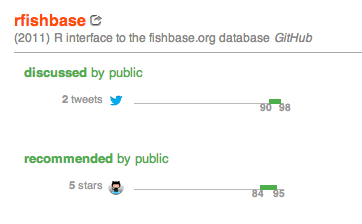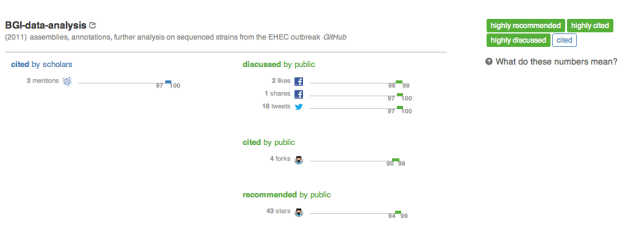Have you ever tried to search for an author, only to discover that he shares a name with 113 other researchers? Or realized that Google Scholar stopped tracking citations to your work after you took your spouse’s surname a few years back?
If so, you’ve probably wished for ORCID.
ORCID IDs are permanent identifiers for researchers. Community uptake has increased tenfold over the past year, and continues to be adopted by new institutions, funders, and journals on a daily basis. ORCID may prove to be one of the most important advances in scholarly communication in the past ten years.
Here are ten things you need to know about ORCID and its importance to you.
1. ORCIDs protects your unique scholarly identity
There are approximately 200,000 people per unique surname in China. That’s a lot of “J Wang”s–more than 1200 in nanoscience alone! Same for lots of other names: we’re just not as uniquely named as we think.
Not a Wang? You’ll probably still need ORCID if you plan to assume your spouse’s family name, or accidentally omit your middle initial from the byline when submitting a manuscript.
ORCID solves the author name problem by giving individuals a unique, 16-digit numeric identification number that lasts over time.
The numbers are stored in a central registry, which will power a research infrastructure that ensures that people find the correct “J Wang” and get credit for all their publications.
2. Creating an ORCID identifier takes 30 seconds
Setting up an ORCID record is easier than setting up a Facebook account, and literally only takes 30 seconds.
Plus, if you’ve published before, you likely already have a ResearcherID or Scopus Author ID, or you may have publications indexed in CrossRef–which means that you can easily import information from those systems into your ORCID record, letting those websites do the grunt work for you.
3. ORCID is getting big fast

Growth in ORCID identifiers, from Oct. 2012-Mar. 2014
Even if you haven’t yet encountered ORCID, you likely will soon. The number of ORCID users grew ten-fold over 2013, and continues to grow daily. You’ll likely encounter ORCID identifers more and more often on journal websites and funding applications–a great reason to better understand ORCID’s purpose and uses.
4. ORCID lasts longer than your email address
Anyone who has ever moved institutions knows the pain of losing touch with colleagues once access to your old university email disappears. ORCID eases that pain by storing your most recent email address. If you choose to share it, your email address can be shared across platforms–meaning you spend less time updating your many profiles.
5. ORCID supports 37 types of “works,” from articles to dance performances
Any type of scholarly output you create, ORCID can handle.
Are you a traditional scientists, who writes only papers and the occasional book chapter? ORCID can track ‘em.
Are you instead a cutting-edge computational biologist who releases datasets and figures for your thesis, as they are created? ORCID can track that, too.
Not a scientist at all, but an art professor? You can import your works using ORCID, as well, using ISNI2ORCID… you get the idea.
ORCID will even start importing information about your service to your discipline soon!
6. You control who views your ORCID information
Concerned about the privacy implications of ORCID? You’re in luck–ORCID has granular privacy controls.
When setting up your ORCID record, you can select the default privacy settings for all of your content–Open to everyone, Open to trusted parties (web services that you’ve linked to your ORCID record), or Open only to yourself. Once your profile is populated, you can set custom privacy levels for each item, easy as pie.
7. ORCID is glue for all your research services
You can connect your ORCID account with websites including Web of Science, Figshare, and Impactstory, among many others.
Once they’re connected, you can easily push information back and forth between services–meaning that a complete ORCID record will allow you to automatically import the same information to multiple places, rather than having to enter the same information over and over again on different websites.
And new services are connecting to ORCID every day, sharing information across an increasing number of platforms–repositories, funding agencies, and more!
8. Journals, funders & institutions are moving to ORCID
Some of the world’s largest publishers, funders, and institutions have adopted ORCID.
Over 1000 journals, including publications by PLOS, Nature, and Elsevier, are using ORCID as a way to make it easier for authors to manage their information in manuscript submission systems. ORCID can also collect your publications from across these varied services, making it possible to aggregate author-level metrics.
Funding agencies are integrating their systems with ORCID for similar reasons. Funders from the Wellcome Trust to the NIH now request that grantees use ORCIDs to manage information in their systems, and many other funding agencies across the world are following suit.
In 2013, universities accounted for the largest percentage of all new ORCID members. ORCID helps institutions track your work, compile information for university-level reporting (i.e., total funding received by its scholars), and more efficiently manage information on faculty profiles. By eliminating redundancies and automating some reporting functions, ORCID will be especially helpful in reducing time and monies spent on REF and other assessment activities.
9. When everyone has an ORCID identifier, scholarship gets better
How many hours have you wasted by filling in your address, employment history, collaborator names and affiliations, etc when applying for grants or submitting manuscripts? For many publishers and funders, you can now simply supply your ORCID identifier, saving you precious time to do research.
In addition to increasing efficiency, ORCID can also help connect funding dollars with tangible outputs, track citations beyond journal articles, and help keep author contact information up-to-date.
10. ORCID is open source, open data, and community-driven
ORCID is a community-driven organization. You can help shape its development by adding and voting for ideas on ORCID’s feedback forum.
It’s also Open by design. ORCID is an open source web-app that allows other web-apps to use its open API and mine its open data. (We actually use ORCID’s open API to easily import information into your Impactstory profile.) Openness like ORCID’s supports innovation and transparency, and can keep us from focusing myopically on limited publication types or single indicators of impact.
And there we have it–ten things you now know about ORCID. Reference them and you’ll sound like an expert at your next department meeting (to which you should of course bring your custom ORCID mug). 🙂
Do you use ORCID? Leave your ORCID identifier in the comments, along with your thoughts about the system.
Thanks to ORCID’s Rebecca Bryant for feedback on this post.








